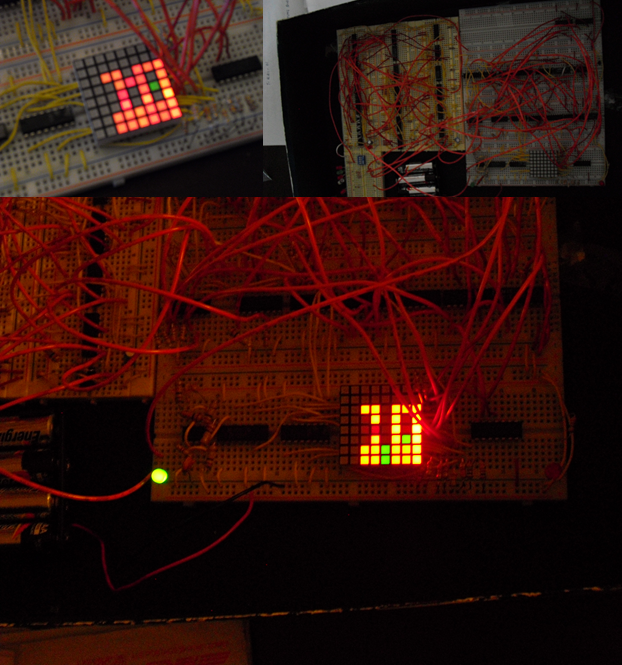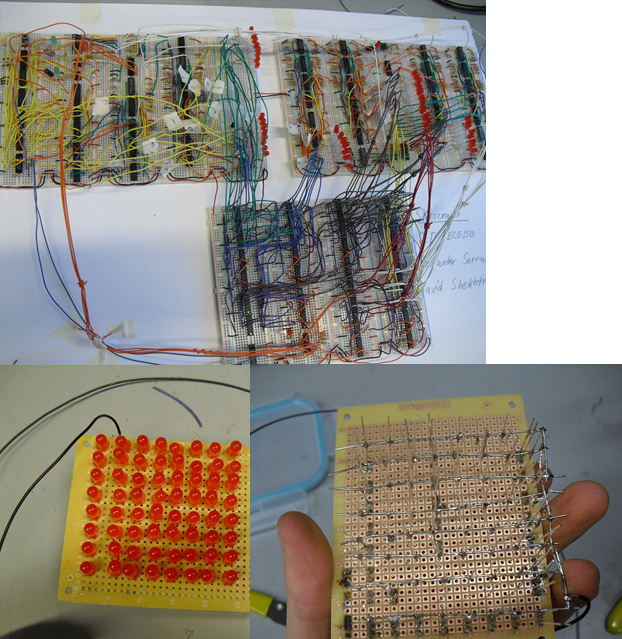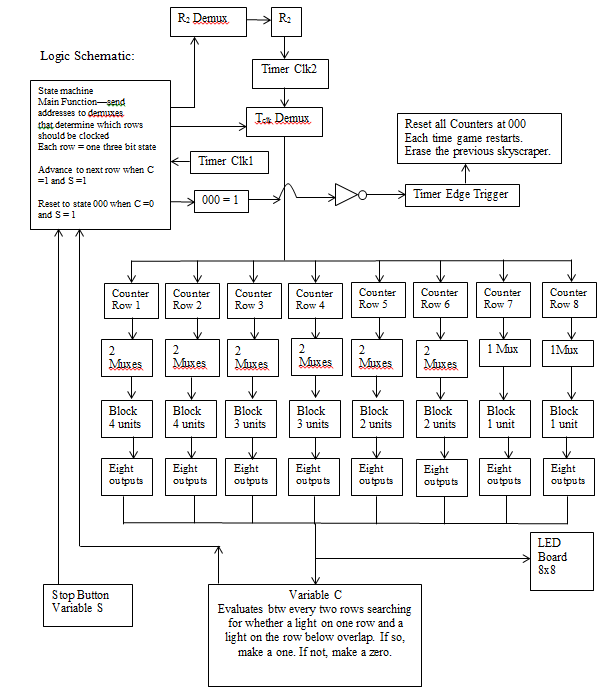DLD Midterm project: The Maze of Life!
The word below is the Hebrew word for life Chai. In my DLD project, I decided to build a maze out of the word life. The circuit is consists of a 4 bit sate machine with 5 inputs, up, down, left, right, and an atstable obstacle timer; the board (the LED matrix) has 16 squares to walk on, which correspond to the 16 possible addresses produced by the state machine. Since eight bits constitute a large amount of logic to simplify, 4 bit multiplexers were constructed and used to build the brain of the machine. The truly difficult part of this awesome project was the decoder for the LED matrix. Rows and columns had to be multiplexed as addresses were fed by a counter; but worst of all, the chips did not have enough power to drive the matrix, so the decoding logic needed to be revised to source 0's and not 1's to the matrix–not as easy as it sounds.
…………………………………………………………………………………… …………………………
…………………………
The goal: Find your way from the lower right corner to the lower left corner without getting caught by hidden obstacles.
DLD Final project:
Skyscraper: Tower to the Gag (btw. short a and long a)
Build a tower of light to the top.
The goal of the skyscraper game is to utilize digital logic to allow a user to build a tower of light on an eight by eight LED matrix. Using a state machine to determine which row is being played at any given moment of time, a counter is clocked to shift a block of light to the left by one unit every pulse until the player presses the stop button to freeze the block. The state machine senses the input of the button, S, and advances to the next state, so long as a light on the row the player stopped overlaps with a light from the previous row (row one is an exception). Variable C is responsible for this evaluation of rows and feeds the state machine with a simple 0 or 1 to determine whether the player has the right to player the next row. If 1, advance; if 0, restart the game at the first row and erase the player’s prior progress. The rest of the game is just technicalities.
Press this link to return back to original page:


